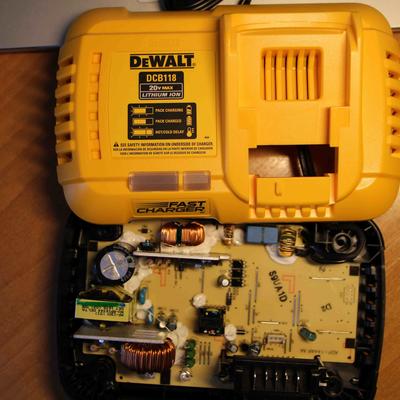AOC G2460PQU Monitor: Setup and Calibration Walk-Through
Why you can trust Tom’s Hardware
Our expert reviewers spend hours testing and comparing products and services so you can choose the best for you. Find out more about how we test.
OSD Setup And Calibrating AOC’s G2460PQU
OSD Tour
The G2460PQU’s OSD looks a little different than most displays, but should still be familiar to those who have used AOC monitors before. The menu is always at the bottom of the screen and is broken up into five main sub-menus. Press the first button left of Power to activate it.
The Luminance menu has brightness and contrast controls, along with gamma presets. The default setting is Gamma 1, but we found Gamma 2 to be more accurate.
Eco Mode is AOC’s term for picture mode and there are six to choose from. The only one that allows full calibration control is Standard. The others, Text, Internet, Game, Movie, and Sports, lock out the RGB sliders. Moreover, some of them eliminate the brightness, contrast, and gamma controls.
There are three Gamma presets available. The default is 1, but 2 is far better if your goal, like ours, is 2.2. We suggest dialing in that setting before adjusting the color temp sliders.
DCR stands for Dynamic Contrast Ratio. Leave it off for the best image quality. While turning it on increases measured contrast, it also crushes detail in both shadow and highlight areas.
Overdrive can reduce the ghosting that sometimes occurs behind fast moving objects on-screen. When you’re running at high refresh rates, it won’t make a difference since motion blur is already negligible.
i-Care utilizes a sensor mounted on the front bezel to adjust brightness based on the room light.
DPS (Dynamic Power Saving) cuts energy use by up to 50 percent. Of course, light output is also reduced. Since the G2460PQU has output to spare, you can use this control to keep from maxing the backlight.
We didn’t bother to snap a photo of the second menu, Image Setup. It contains controls for tuning analog signals, along with a Sharpness slider. The menu is grayed out when using a digital connection.
The menu is grayed out when using a digital connection.
Color temp controls are found under the Color Setup menu. The default preset, Warm, is actually a bit cool according to our measurements. Switch to User for better accuracy and access to the RGB sliders. Kudos to AOC for starting those adjustments in the center of their range. It’s much easier to dial in grayscale without reducing contrast that way.
DCB stand for Dynamic Color Boost and is designed to enhance specific colors in the palette. There are modes like Nature Skin and Green Field that tweak flesh tones or grass, for instance. Using them is a matter of personal preference. They won’t make the monitor’s color more accurate, only different.
Picture Boost creates a user-defined area on the screen where one can adjust brightness and contrast separately from the rest of the image. You can size and position the window anywhere you like and use it to highlight content.
The most useful tool in the OSD Setup menu is the timeout feature, which can be set for as long as two minutes. Since the menu is so wide, there isn’t much point in moving it around, as it’s already well away from a typical test pattern. You can also adjust the menu’s transparency.
Since the menu is so wide, there isn’t much point in moving it around, as it’s already well away from a typical test pattern. You can also adjust the menu’s transparency.
The last few ergonomic options are in the Extras menu. Input Select defaults to the Auto setting and never failed to lock on to whatever source we connected.
Auto Config will sync with analog signals and usually eliminate the need for any phase or clock adjustments.
The Off Timer can be set for up to 24 hours.
Image Ratio can replicate several aspects and screen sizes from 17-inch 4:3 up to the full 24-inch 16:9 image.
DDC-CI should always be left on to allow two-way interaction between the G2460PQU and your computer.
Reset returns all settings to their factory defaults.
Information is limited to input resolution, and the horizontal and vertical refresh rates. We would also like to see the monitor’s firmware version displayed, as well as its serial number.
AOC G2460PQU Calibration
Since the only picture mode that allows full adjustment is Standard, that’s where we perform our calibration. To get maximum output down to 200 cd/m2, we had to drop Brightness to 37 out of 100. The G2460PQU is an exceptionally bright display. The Contrast control doesn’t clip information beyond a setting of 50, but we reduced it to 45 for better grayscale accuracy at 100-percent brightness.
To get maximum output down to 200 cd/m2, we had to drop Brightness to 37 out of 100. The G2460PQU is an exceptionally bright display. The Contrast control doesn’t clip information beyond a setting of 50, but we reduced it to 45 for better grayscale accuracy at 100-percent brightness.
If you don’t calibrate, the best grayscale and color performance are found at a Color Temp setting of either User or sRGB. Further manipulation of the RGB sliders brings color to a fairly high standard of accuracy. For best results, leave DCR, DPS, and DCB off. All of these are dynamic settings that will change your calibration depending on content.
| AOC G2460PQU Calibration Settings | |
|---|---|
| Eco Mode | Standard |
| Contrast | 45 |
| Brightness | 37 |
| Color Temp | User |
| RGB | Red 53, Green 51, Blue 47 |
As mentioned, the RGB sliders start in the center of their range, which is a good thing. To maintain the highest possible contrast, make your changes in a balanced fashion. Keeping the three values as close to one another as possible results in little to no contrast reduction.
To maintain the highest possible contrast, make your changes in a balanced fashion. Keeping the three values as close to one another as possible results in little to no contrast reduction.
BenQ XL2720Z: Price Comparison
368 Amazon customer reviews
☆☆☆☆☆
No price information
Check Amazon
powered by
Current page:
OSD Setup And Calibrating AOC’s G2460PQU
Prev Page Packaging, Physical Layout, And Accessories
Next Page Measurement And Calibration Methodology: How We Test
Christian Eberle is a Contributing Editor for Tom’s Hardware US. He’s a veteran reviewer of A/V equipment, specializing in monitors.
Understanding DCB Features and Requirements | Junos OS
Data center bridging (DCB) is a set of enhancements to
the IEEE 802. 1 bridge specifications. DCB modifies and extends Ethernet
1 bridge specifications. DCB modifies and extends Ethernet
behavior to support I/O convergence in the data center. I/O convergence
includes but is not limited to the transport of Ethernet LAN traffic
and Fibre Channel (FC) storage area network (SAN) traffic on the same
physical Ethernet network infrastructure.
A converged architecture saves cost by reducing the number of
networks and switches required to support both types of traffic, reducing
the number of interfaces required, reducing cable complexity, and
reducing administration activities.
The Juniper Networks QFX Series and EX4600 switches support
the DCB features required to transport converged Ethernet and FC traffic
while providing the class-of-service (CoS) and other characteristics
FC requires for transmitting storage traffic. To accommodate FC traffic,
DCB specifications provide:
-
A flow control mechanism called priority-based
flow control (PFC, described in IEEE 802.1Qbb)
to help provide lossless transport.
-
A discovery and exchange protocol for conveying configuration
and capabilities among neighbors to ensure consistent configuration
across the network, called Data Center Bridging Capability Exchange
protocol (DCBX), which is an extension of Link Layer Data Protocol
(LLDP, described in IEEE 802.1AB). -
A bandwidth management mechanism called enhanced transmission
selection (ETS, described in IEEE 802.1Qaz). -
A congestion management mechanism called quantized congestion
notification (QCN, described in IEEE 802.1Qau).
The switch supports the PFC, DCBX, and ETS standards but does
not support QCN. The switch also provides the high-bandwidth interfaces
(10-Gbps minimum) required to support DCB and converged traffic.
This topic describes the DCB standards and requirements
the switch supports:
Lossless Transport
FC traffic requires lossless transport (defined as no frames
dropped because of congestion). Standard Ethernet does not support
lossless transport, but the DCB extensions to Ethernet along with
proper buffer management enable an Ethernet network to provide the
level of class of service (CoS) necessary
to transport FC frames encapsulated in Ethernet over an Ethernet network.
This section describes these factors in creating lossless transport
over Ethernet:
- PFC
- Buffer Management
- Physical Interfaces
PFC
PFC is a link-level flow control mechanism similar to Ethernet
PAUSE (described in IEEE 802.3x). Ethernet PAUSE stops all traffic
on a link for a period of time. PFC enables you to divide traffic
on a link into eight priorities and stop the traffic of a selected
priority without stopping the traffic assigned to other priorities
on the link.
Pausing the traffic of a selected priority enables you to provide
lossless transport for traffic assigned that priority and at the same
time use standard lossy Ethernet transport for the rest of the link
traffic.
Buffer Management
Buffer management is critical to the proper functioning of PFC,
because if buffers are allowed to overflow, frames are dropped and
transport is not lossless.
For each lossless flow priority, the switch requires sufficient
buffer space to:
The propagation delay due to cable length and speed, as well
as processing speed, determines the amount of buffer space needed
to prevent frame loss due to congestion.
The switch automatically sets the threshold for sending PFC
pause frames to accommodate delay from cables as long as 150 meters
(492 feet) and to accommodate large frames that might be on the wire
when the switch sends the pause frame. This ensures that the switch
sends pause frames early enough to allow the sender to stop transmitting
before the receive buffers on the switch overflow.
Physical Interfaces
QFX Series switches support 10-Gbps or faster, full-duplex interfaces.
The switch enables DCB capability only on 10-Gbps or faster Ethernet
interfaces.
ETS
PFC divides traffic into up to eight separate streams (priorities,
configured on the switch as forwarding classes) on a physical link.
ETS enables you to manage the link bandwidth by:
-
Grouping the priorities into priority groups (configured
on the switch as forwarding class sets). -
Specifying the bandwidth available to each of the priority
groups as a percentage of the total available link bandwidth.
-
Allocating the bandwidth to the individual priorities
in the priority group.
The available link bandwidth is the bandwidth remaining after
servicing strict-high priority queues. On QFX5200, QFX5100, EX4600,
QFX3500, and QFX3600 switches, and on QFabric systems, we recommend
that you always configure a shaping rate to limit the amount of bandwidth
a strict-high priority queue can consume by including the shaping-rate statement in the [edit class-of-service schedulers] hierarchy on the strict-high
priority scheduler. This prevents a strict-high priority queue from
starving other queues on the port. (On QFX10000 switches, configure
a transmit rate on strict-high priority queues to set a maximum amount
of bandwidth for strict-high priority traffic.)
Managing link bandwidth with ETS provides several advantages:
-
There is uniform management of all types of traffic on
the link, both congestion-managed traffic and standard Ethernet traffic.
-
When a priority group does not use all of its allocated
bandwidth, other priority groups on the link can use that bandwidth
as needed.When a priority in a priority group does not use all of its
allocated bandwidth, other priorities in the group can use that bandwidth.The result is better bandwidth utilization, because priorities
that consist of bursty traffic can share bandwidth during periods
of low traffic transmission instead of consuming their entire bandwidth
allocation when traffic loads are light. -
You can assign traffic types with different service needs
to different priorities so that each traffic type receives appropriate
treatment. -
Strict priority traffic retains its allocated bandwidth.
DCBX
DCB devices use DCBX to exchange configuration information with
directly connected peers (switches and endpoints such as servers).
DCBX is an extension of LLDP. If you disable LLDP on an interface,
that interface cannot run DCBX. If you attempt to enable DCBX on an
If you attempt to enable DCBX on an
interface on which LLDP is disabled, the configuration commit fails.
DCBX can:
-
Discover the DCB capabilities of peers.
-
Detect DCB feature misconfiguration or mismatches between
peers. -
Configure DCB features on peers.
You can configure DCBX operation for PFC, ETS, and for Layer
2 and Layer 4 applications such as FCoE and iSCSI. DCBX is enabled
or disabled on a per-interface basis.
Electric circuit operating modes
It is known that an electric circuit is a set of certain devices that provide a constant, uninterrupted passage of electric current. The operation of the circuit is impossible if it lacks any elements; both sources of energy and its conductors must be present, and receivers, as a rule, are the main devices that form this circuit.
If we take into account that there are various elements in the electrical circuit, which are divided into three main groups: energy sources, current conductors and receivers, that is, those elements that are powered by current and convert energy into its other forms, then we can to assume that there are different modes of operation of electrical circuits.
Basic operating modes of electrical circuits
As mentioned earlier, any electrical circuit can have a rather complex structure, depending on the number of elements in it and its branching. All this leads to the fact that the circuit can operate in various modes.
There are three main operating modes: load (or matched), short circuit mode, and idle mode. They differ from each other in the load on the electrical circuit. You can also highlight the nominal mode of operation. In this mode of operation, all devices in the circuit operate under the conditions specified for them as optimal. These characteristics are prescribed by the manufacturer in the passport data during the manufacture of the device at the factory.
Load or coordinated operation . If a receiver is connected to an energy source in an electrical circuit, then it has a certain resistance. Such a receiver can be any device, such as a light bulb.
If there is voltage, then Ohm’s law is in effect, thus, the EMF of the source is obtained from the sum of the voltages of the external section of the circuit and the internal resistance of the source. The voltage drop in the external circuit will be equal to the voltage at the source terminals. It depends on the load current: the lower the load resistance, the greater the current and, accordingly, the lower the voltage at the circuit power supply terminals.
The voltage drop in the external circuit will be equal to the voltage at the source terminals. It depends on the load current: the lower the load resistance, the greater the current and, accordingly, the lower the voltage at the circuit power supply terminals.
In other words, we can say that the load or matched mode of operation is a mode in which there is a transfer of a load of increased power from the source. In this mode, the load resistance is equal to the internal resistance of the source, and the maximum power is consumed.
However, it is not recommended to use this mode, because if the nominal values are exceeded for a long time, the devices may fail.
Idle mode . This mode of operation of the electrical circuit characterizes its open state — there is no current, and all elements are disconnected from the power source.
In this state of the circuit, the internal voltage drop is zero, and the voltage at the power supply terminals is the same as the EMF of the source.
That is, we can say that the idle mode characterizes the electrical circuit when it is in an open state, and the load resistance is completely absent or disconnected. This state of the circuit can be used to measure the EMF of the power supply.
Short circuit mode . This mode of operation is considered emergency, the electrical circuit cannot work normally. A short circuit occurs when connecting two different points in the circuit, the potential difference of which is different. This state is not provided by the device manufacturer and disrupts its normal operation.
In this mode of operation, the terminals of the power source are closed by a conductor (“short-circuited”), while its resistance is close to zero. Often, a short circuit occurs when two wires are connected that connect the source and receiver in the circuit, as a rule, their resistance is negligible, so it can be called zero.
When a short circuit occurs, the current in the circuit is significantly higher than the nominal values (due to the lack of resistance). This can render the power source and receivers in the electrical circuit unusable. In some cases, this is the result of incorrect actions on the part of personnel working with electrical equipment.
This can render the power source and receivers in the electrical circuit unusable. In some cases, this is the result of incorrect actions on the part of personnel working with electrical equipment.
11. Operating modes of DC electric circuit
Nominal
mode — when connected to the source
the consumer for whom it is intended.
Mode
idling — source operation without
consumer.
Mode
short circuit — work without
consumer, source contacts
are short-circuited.
Matched
mode — external circuit resistance
equal to the internal resistance and
source. In this mode, from the source
the maximum is transferred to the consumer
power. Efficiency = 50%. It is used in radio engineering.
12. DC power
Electrical
power P (W) is determined by the product
voltage per current:
P=UI
(1)
where
U-voltage at current collector, V
I-force
current through pantograph, A
Unit
power — 1 watt 1 volt x
1 amp
Bearing
taking into account Ohm’s law (), equality 1 can be represented as follows
way:
(2)
(3)
B
practice use a unit of power
— kilowatt (kW), 1 kW = 1000 W.
Condition
maximum power transfer from
generator to load is expressed as a simple
definition: load resistance
Rn must be equal to the resistance
generator Rg, i.e. Rn = Rg. Other
In other words, this means that all input
and output resistances of any active
or passive devices must be
purely active.
Efficiency=
Power useful / power expended.
13. Single-phase AC circuits
AC
is called electric current
and whose direction changes during
time.
Region
AC applications are much
wider than permanent. This is explained
because the AC voltage
can be easily lowered or raised with
using a transformer, almost
any limits. alternating current lighter
transport over long distances.
But the physical processes that take place
in AC circuits, more difficult than
in DC circuits due to the presence
variable magnetic and electrical
fields. Currents whose values are repeated
at regular intervals in one
and the same sequence are called
periodic, and the smallest interval
the time after which these repetitions
are observed, — period T
Meaning
alternating current in the considered
moment of time is called instantaneous
value and denoted by a lowercase letter
i.
Instantaneous
current is called periodic if
its values are repeated through the same
periods of time.
Periodic
sinusoidal currents
law are called sinusoidal.
Instant
the value of the sinusoidal current is determined
formula
Voltage
u(t) = Um sin (ωt + ψu),
EMF
e(t) = Em sin(ωt
+ψe),
14. Image of sinusoidal quantities in rectangular coordinates.
sinusoidal
currents and voltages can be shown
graphically, write using equations
with trigonometric functions and
represent as rotating vectors
on the Cartesian or complex plane.
Write down
sinusoidal voltages using
trigonometric functions:
Values
sines in brackets are called phases
sinusoids, and the phase values in the initial
point in time — the initial phase.
